
_
El Batán Parque Ecológico is an ecological park in the south of Mexico City. Home to the last monumental work of artist Diego Rivera, the park’s history is more curious than most visitors will ever know. At 41,575 square meters, it’s quite large and maintains tremendous variety of trees. Among them are Ginko biloba, Italian cypress, jacaranda, Indian laurel, Chinese elm, weeping laurel, astronomical, avocado and Brazilian guava, among others.
The Batán began as part of the Hacienda Batán which came to belong to the Matsumoto family. Tatsugoro Matsumoto had settled in Mexico in 1896. During the Porfiriato, he’d designed the gardens surrounding the Chapultepec Castle and was soon the leading landscape gardener in the country. He’s also well known for having designed the Japanese Tea Garden beneath the Golden Gate Bridge in San Francisco, California. He eventually purchased the Hacienda Batán on the edge of the Pedregal area but within the textile region of Magdalena Contreras. The Hacienda headquarters was on the site of the famous Unidad Independencia housing complex, just on the other side of the Periferico highway.
By the 1930s, he’d been hired to plant cherry trees in imitation of those planted in 1912 in Washington D.C. The order came from the administration of President Pascual Ortiz Rubio who was president from 1930 to 1932. Matsumoto found the climate not so friendly to the Japanese-style cherry trees, and instead planted jacaranda trees. This explains the presence of Brazilian jacaranda trees all over Mexico City even to this day.
During World War II, pressure from the USA resulted in interment camps for Japanese-Mexicans who’d begun arriving to Mexico in 1897, just a year after Matsumoto himself. Fortunately, Matsumoto himself was in a position to host nearly all of those in Mexico City.
The property remained a gardening and food distribution point for interred Japanese-Mexicans until after the war finally ended in 1945. It was then briefly owned by the brother of the president of Mexico, Manuel Ávila Camacho (1940-1946). By 1953, the entire property was sold to Dolores Olmedo, a self-made businesswoman widely known as an art patron and collector.
Photos: Armando Olivo Martín del Campo, Attribution-Share Alike 4.0 International
This then explains the presence of the final monumental work of Diego Rivera on the grounds of the park. “El Espejo la Estrella,” (The Mirror of the Star) was completed over a few months in 1956. The work is a mosaic in thousands of pieces of marble, onyx, and mother of pearl. 165 figures representing ancient gods and frogs, snails, turtles, dogs, and others. When filled with water, it also serves as a reflection pool.
With the death of Diego Rivera, in November of 1957, it’s not recorded what was happening with Olmedo. (She died in 2002.) But taxes were owed on the now resplendent property. Mexico’s National Bank of Public Services and Works (Banco Nacional de Obras y Servicios Públicos – Banobras) acquired the property and created El Parque del Federalismo.
It remained such until the name was changed back to the name of the old ranch in 1988. And it’s been El Batán Parque Ecológico ever since.
El País/Almudena Barragán: El jardinero japonés que llenó Ciudad de México de jacarandas
 batan.parque.ecologico@gmail.com
batan.parque.ecologico@gmail.com
 55 5595 6337
55 5595 6337
 https://www.facebook.com/ElBatanParqueEcologico/
https://www.facebook.com/ElBatanParqueEcologico/
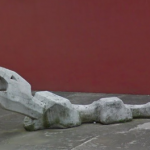
Nearest at 0.24 kms.
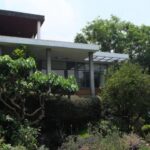
Nearest at 0.30 kms.
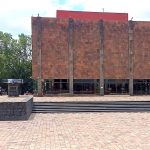
Nearest at 0.41 kms.
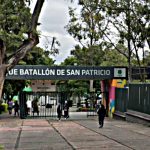
An important park for people from all over Álvaro Obregón . . .
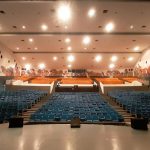
A first-rate performance space for audiences of every age . . .
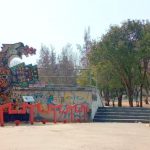
Green areas surrounding the headquarters of the Álvaro Obregón local government . . .
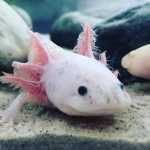
Mexico City's Axolotl Museum in the Parque Tarango . . .
An important natural enclave helps birds moving to and from the southern highlands . . .